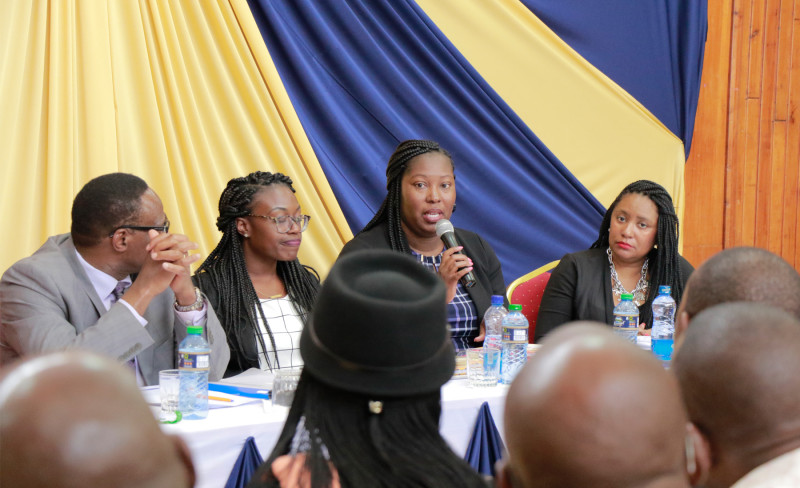Centre for Faculty Excellence (CFE) held its second series training to enhance and inculcate the art and culture of publishing among young researchers. The facilitated by Dr. Dakota King –White from Cleveland State University US, panelists mentored young researchers and enhanced their skills in preparing, writing and submitting articles for publication in major academic journals and conferences. Others included Prof. Joshua Bagaka’s (DVCA KCA University) Dr. Na’ Tasha Evans (Kent State University), Dr. Kamisha Spates (Kent State) and Prof. Patrick Ogao (KCA University) as the moderator.
According to the panelists, the future of research in Africa rests in the hands of its young scientists. Young researchers have to publish to be heard.
Publishing is the most important method for communicating scientific work and of being acknowledged academically.

Researchers should publish include; meeting specific career growth requirements as in promotion to an academic position and improving prospects of success as when applying for research funding.
Publishing also can propel a young scientist into national or global recognition status as an expert in a particular field.
Publishing a scientific paper can result in fruitful new scientific collaborations including financial profitable arrangements for authors in academia, as a result of commercial overtures for collaborations or consultancies
A young researcher’s guide to writing an original research article: What does an original research article mean
- It should be written by the researchers who actually conducted the study.
- It should include the hypothesis or research question, the purpose of the study, and the details of the research methods.
- The research findings should be reported.
- These findings should be interpreted and possible implications discussed
Important steps in the research writing process
1. Choosing a research question
In order to begin your research, you first need to choose a research question. However, you cannot do this unless you have read a substantial amount of published literature in the field of your research. Develop a habit of regularly reading scientific literature. This will give you an idea of some of the existing problems in your field of interest. Think about these problems and discuss your ideas with your advisor before you decide which problem you would like to address. You need to consider both your interest and the feasibility of the idea before finalizing your research question.
2. Doing a literature search
Once you have finalized your research question, you need to do an extensive literature search. Plan your literature search well. You can choose a systematic approach by trying to search for all relevant material on the topic. You can also adopt a retrospective approach by finding the most recent material and working your way backward. You might also need to follow important citations that you come across. You will need to use books, journal articles, and other related sources of information such as government reports, online databases, etc. Keep a written record of your searches as this will be very helpful when writing the references and citations in your manuscript.
3. Structuring a research article
An original research article usually follows a specific structure. The most commonly used structure of a research paper includes the following sections: Introduction, Methods, Results, and Discussion.
- Introduction: The introduction provides background information and explains what your study is about and the purpose behind it.
- Methods: The methods section gives a detailed explanation of how you conducted your research and the materials you used. This is done so that other researchers can replicate your research and reproduce the findings.
- Results: This section presents your research findings in detail along with all the data.
- Discussion: This section interprets the findings and discusses the impact that your research may have on the field of study.
- Make sure you cite all the references you have used in your paper. In the end, provide a detailed reference list of all the sources you have used.
4. Formatting the paper
Once you are done with writing the paper, it is time to format it. Generally, each journal has a house style, and you have to format your paper according to the style of the journal you are submitting to. This can be a tedious process, particularly if your paper is rejected and you have to re-format it when submitting it to another journal. One way to make this process less tedious is to follow a standard format based on a widely used style guide in your field. Format your paper using some general guidelines presented in that style guide. This will make it easier for you as you will only have to make a few modifications at the time of submission to suit the journal style.

